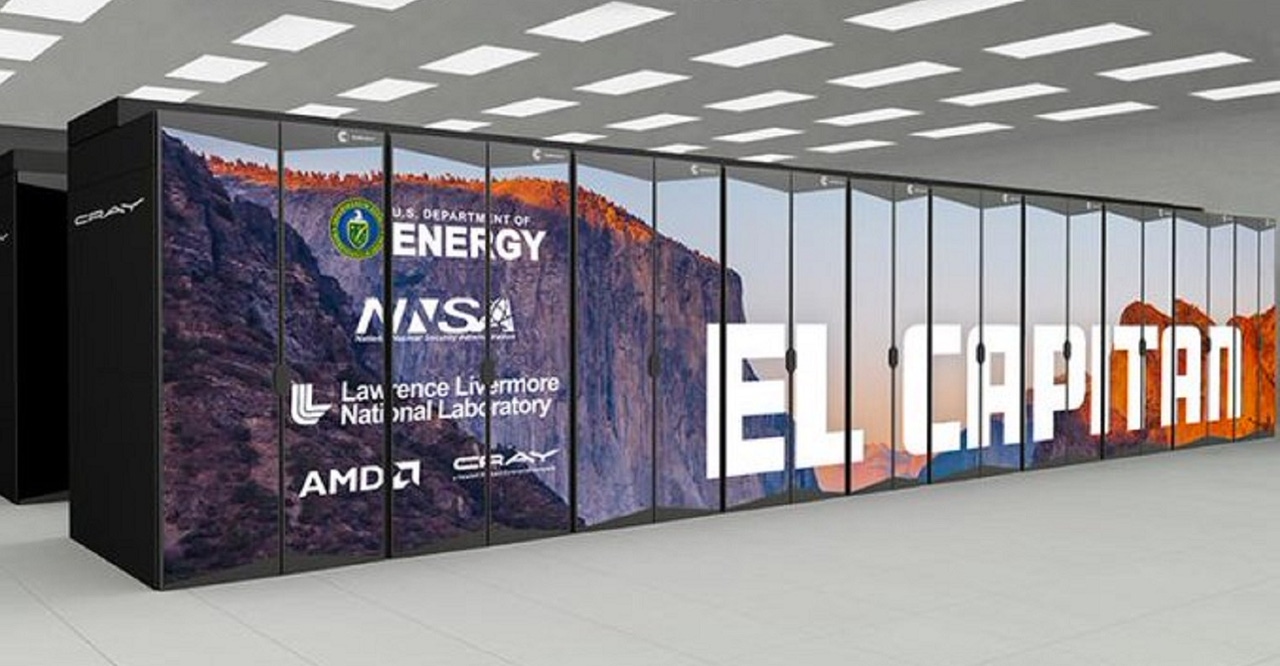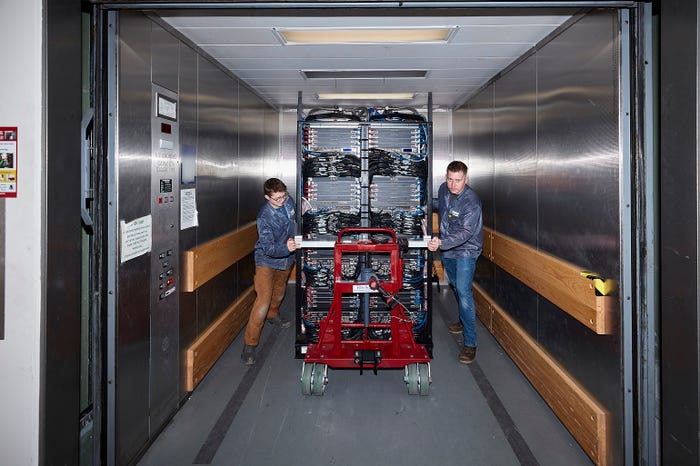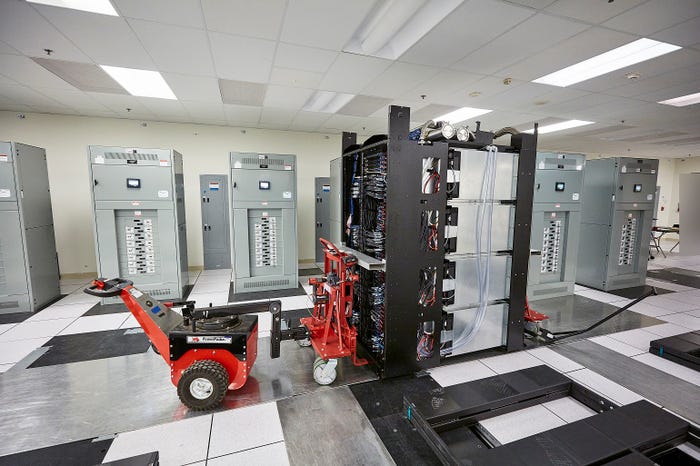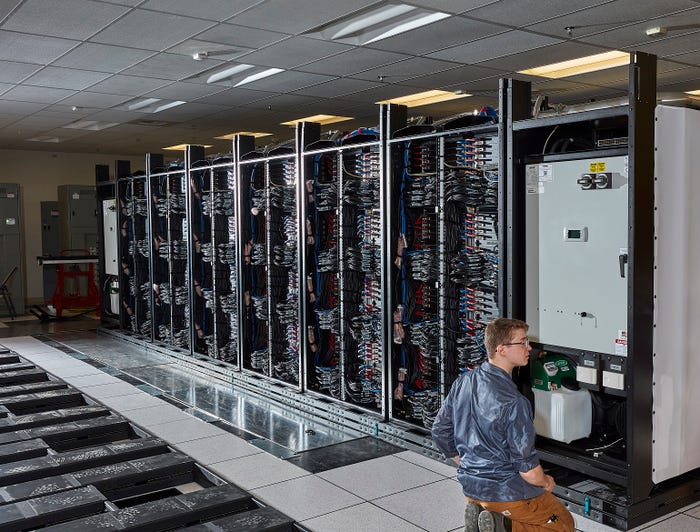Lawrence Livermore National Lab Begins Building El Capitan SupercomputerLawrence Livermore National Lab Begins Building El Capitan Supercomputer
The 2-exaflop system, powered by HPE Cray hardware and the latest generation AMD processors, could become world's fastest supercomputer when it goes live in 2024.

The Department of Energy's Lawrence Livermore National Laboratory began receiving and installing components for its El Capitan supercomputer last week, marking a major milestone in its quest to build what could become the world's fastest supercomputer next year.
The supercomputer, which will surpass speeds of more than 2 exaflops per second, will become the nation's third exascale supercomputer when it debuts in 2024. LLNL, in Livermore, Calif., posted four pictures on social media last Wednesday, showing the first components being delivered and installed.

El-Cap-delivery3

El-Cap-delivery2

El-Cap-installation1

El-Cap-installation
The equipment included infrastructure racks, compute cabinets, and a parallel file system. The compute blade will be delivered later this year, said Bronis R. de Supinski, chief technology officer of Livermore Computing at LLNL.
"It's been a long journey. We started [working on El Capitan] about five years ago, so it's a big milestone to actually receive equipment," de Supinski told Data Center Knowledge in an interview. "The deliveries will continue throughout the year."
U.S. Government's Exascale Goals
The U.S. government has pursued exascale supercomputing aggressively to improve the nation's economic competitiveness and supply the nation's researchers and companies with the computing power they need to bolster national security, accelerate scientific research, and build better products — from military planes to wind turbines.
When El Capitan goes live next year, it will become the DOE's third exascale system. The first system — the Frontier supercomputer at Oak Ridge National Laboratory in Tennessee — currently tops the Top500 list as the world's fastest supercomputer. The system, which debuted in 2022 and is still the world's only exascale system, reaches 1.194 exaflop speeds.
Related: U.S. Retakes Lead With World's Fastest Supercomputer
Just last month, Argonne National Laboratory in Illinois finished installing the Aurora supercomputer, the DOE's second exascale system. The lab is currently stress-testing it, but when it goes live, it will surpass Frontier and reach more than 2 exaflops of compute power.
Officials from the DOE's National Nuclear Security Administration (NNSA) have said El Capitan is likely to become the world's fastest supercomputer when it launches in 2024, but whether the system actually achieves that distinction depends on other countries' exascale supercomputing efforts.
El Capitan's Future Impact
El Capitan will be built with HPE Cray EX Series supercomputer hardware and AMD Instinct MI300A processors, the chipmaker's new integrated CPU and GPU chip for high-performance computing and AI workloads, de Supinski said.
According to LLNL, the new supercomputer will enable three labs — LLNL, the Los Alamos National Laboratory, and Sandia National Laboratories — to perform complex predictive modeling and simulations to ensure the safety, security, and reliability of the nation's nuclear stockpile as required by NNSA's Stockpile Stewardship Program.
Related: How Do Supercomputers Fit With Strategies for Sustainability?
El Capitan will also be used for secondary missions that impact national security, such as nuclear nonproliferation and counterterrorism, LLNL officials said.
The next-generation AMD processors, called APU accelerators, will accelerate simulations, provide enormous floating-point performance, and allow scientists to run extremely high-resolution 3D models quicker. In addition, the new chip will increase the fidelity and repeatability of calculations, which in turn will make those simulations truer to life, LLNL officials said.
The upshot: El Capitan will be at least 10 times faster than Sierra, the current fastest supercomputer at LLNL, de Supinski said. Simulations that used to take a week will run in a day on El Capitan, he said.
LLNL will also build a companion supercomputer that's about 10% the size of El Capitan. According to the lab, the companion system, which will run on the same hardware components as El Capitan, will allow researchers to pursue unclassified research on energy security, climate change, grid modernization, drug discovery, and other areas of public interest.
"While we expect it to be one-tenth the size of El Capitan, it's actually a pretty significant system. It will certainly be in the top 100 [of the world's supercomputers]," de Supinski said.
To prepare for El Capitan, LLNL previously built three testbed supercomputers that ranked in the top 200 worldwide. These early access systems were important because they allowed the lab's system administrators to get used to the hardware and ensure its system software is ready to run on HPE equipment. They also allowed the lab's application team to begin porting and getting applications ready to run on AMD processors, he said.
"The early access systems are important, so application teams are ready to use the big system as soon as it's ready to be used," de Supinski said.
About the Author
You May Also Like









